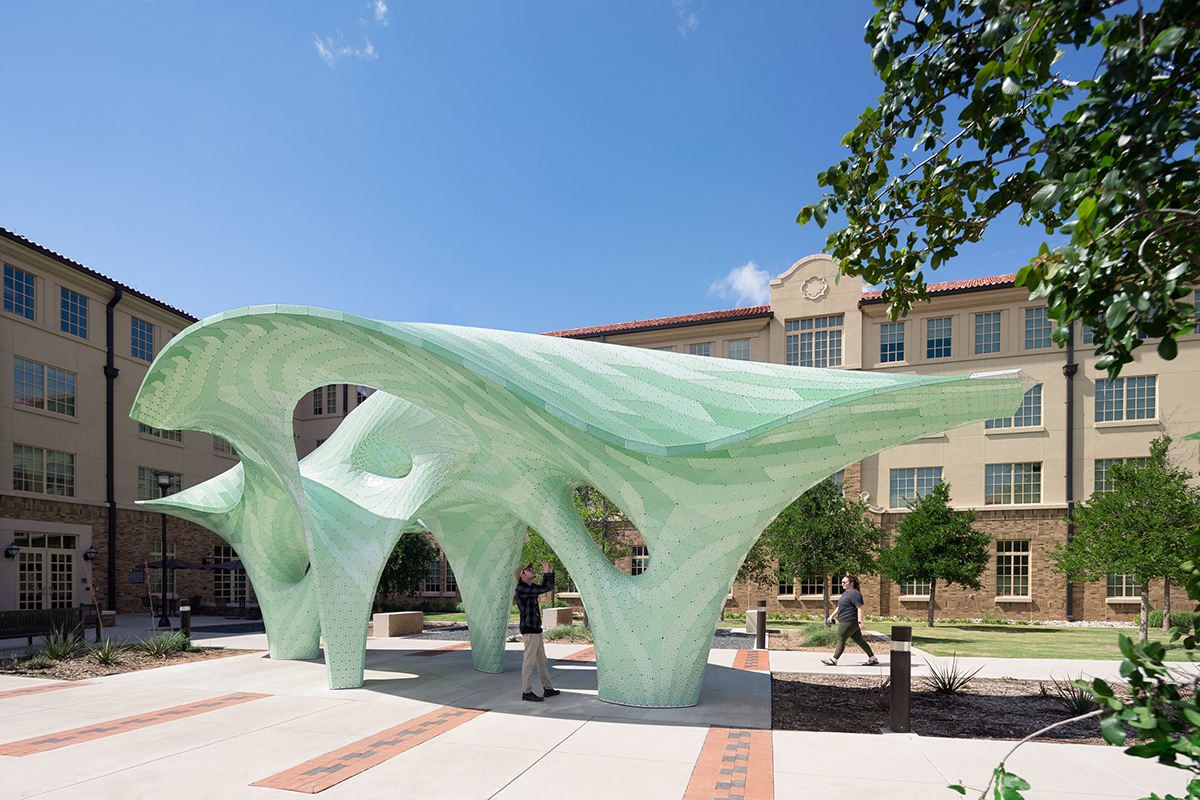At Texas Tech University in Lubbock, Texas, the New York-based MARC FORNES / THEVERYMANY has constructed the Zephyr Pavilion, a flowing structure of cantilevered, aluminum forms designed through complex computational means.
By modeling geometries computationally, Fornes and his studio were able to devise a method of building the pavilion that optimized material thickness and strength such that the structure and the skin are a single piece and the entire pavilion is able to freely support itself.
The team used progressive assembly, building the pavilion like a complicated, flexible puzzle instead of out of pre-built pieces. This process also did away with the need to use scaffolding during the project’s construction.
With diagonally-oriented stripes rippling across its surface, the hollow canopy is formed of five different typologies working together: a locked edge, continuous lines needed for structuring the build-out of the more bulbous parts; a loop column, which pulls many lines to a near singular point; a funneled bridge, or pinch, where areas that are too large require a funnel to connect surfaces, decreasing their radii, and therefore making them stiffer; a creased spine, where a groove is made down a central axis; and a self-supported cantilever.
These forms were discovered and codified in the pavilion through first creating the overall topology and then using local form-finding algorithms, rather than operating on the entire structure, which allows for more freedom without sacrificing structural integrity. The final “pieces” could then be slotted together.
Fornes has previously used similar methodologies for projects like the Pillar of Dreams in Charlotte, North Carolina.
